Sing or Swim: Using those Shower Show-tunes to Improve Your Breathing

By Daniela Navarrete, Swimming World College Intern.
Breathing effectively and efficiently is not only vital in swimming but also in everyday life. On a daily basis, we involuntarily inhale and exhale between 17,000 and 23,000 times. That’s a lot of breathing! Contrary to when we are on dry land, we must consciously calculate when and how to breathe in the water depending on the stroke and distance.

Photo Courtesy: Pexels, Oleksandr Pidvalnyi
While we mostly think to train for speed and power, swimmers can find an edge by strengthening breathing muscles which lead to better posture and more efficient breathing patterns. There are several creative ways to practice great posture and flex those breathing muscles. One such proven practice is training in yoga.
However, have you ever thought about how singing could be an alternative for a swimmer’s breathing practices? Whether you have the voice of Celine Dion or one that should only be heard reverberating off of your shower walls, all swimmers can use singing as a tool to improve breathing.
Breathing Process
Before diving into the correlation between singing and swimming, let’s examine the respiratory system – the group of organs, tissues and muscles that work together to help us breathe. The respiratory muscles are divided into primary and accessory. The primary muscles include the diaphragm (the most important muscle in this system) and the intercostals, located between the ribs. The accessory ones include the neck, chest, shoulder and core muscles.
Red blood cells collect the oxygen from the lungs and carry it to the parts of the body where it is needed. During the process, oxygen is exchanged for carbon dioxide, which goes back to the lungs, and then leaves the body when we exhale.
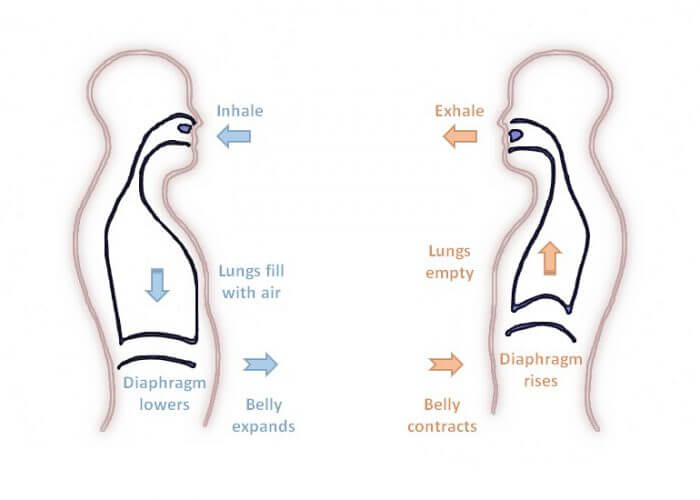
Photo Courtesy: Flickr, Remedial Class
While this chemical exchange happens, the respiratory muscles do their work. During inhalation, the diaphragm and rib muscles contract. The diaphragm flattens and enlarges the chest cavity, and the ribs rise while also increasing chest volume. In other words, the stomach inflates. During exhalation, the muscles relax: the diaphragm curves and rises, the ribs descend, and the chest cavity goes back to place.
Breathing in Swimming
Keeping the biomechanical breathing process in mind, let’s talk about breathing in the water. When swimming, the rate and depth of the breathing process increases. Here, the accessory muscles work together with the diaphragm to help inflate and deflate the lungs by pulling the ribs up and out (inhalation) or down and in (exhalation).
Usually, the average swimmer focuses on using the accessory muscles (neck, chest, shoulder, core) in the breathing process rather than the diaphragm. This makes the swimmer tired easily by spending more energy than needed. In fact, the accessory muscles of breathing are also the muscles that keep swimmers in optimal body position. Therefore, these muscles perform two different tasks at the same time. Thus, they are under a lot of stress.
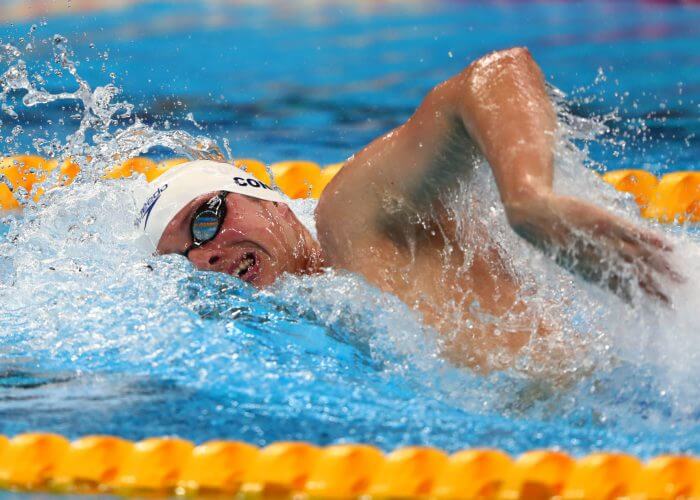
Photo Courtesy: Rob Schumacher-USA TODAY Sports
Sometimes when we swim, we might not be fully emptying our lungs before taking in our next breath. This is called “breath stacking,” and it tends to happen when swimmers use an upper chest pattern of breathing, because we mostly rely on the accessory muscles and barely use the diaphragm and intercostals adequately. We may try to compensate for our lack of oxygen by increasing our respiratory rate. So instead of focusing our energy on going faster, we are spending it on taking in more air.
Considering that singing is also an activity fully based on breathing, it could be an alternative to enhance our lung capacity while we swim to avoid breath stacking. This allows for swimmers to use that extra energy toward the muscles used to surge forward at the end of a tiring race.
Breathing to Sing
According to the National Association of Teachers of Singing (NATS), the most effective techniques when teaching breath support is to focus on abdominal breathing. In swimming, coaches tell us to take a breath and put our heads back in the water as quickly as possible. The shorter time our head is out of the water the better. Similarly, singing exercises require more rapid inspiration and longer expiration for sustained periods of time.

Photo Courtesy: Flickr, hobbes3000
In Paul Kiesgen‘s article Breathing, published by the Journal of Singing of the NATS, the former Professor of Voice at the Indiana University School of Music explains the process. When we sing, we squeeze the abdominal contents within the abdominal wall, which in turn presses upward on the diaphragm and presses air out of the lungs. The same process occurs while we have our heads in the water, creating bubbles when exhaling. Skillful use of the diaphragm during singing is important to achieve and maintain the appropriate amount of air flow.
Posture
Another aspect of vocal training that could benefit swimmers is posture. The key to using the diaphragm effectively is to keep an upright posture at all times.
In the book Jeffrey Allen’s Secrets of Singing by well-known voice teacher Jeffrey Allen, he shares:
“When singing, you can’t breathe properly unless you have a good posture. You can practice breathing exercises in this book or breath exercises from other sources until you’re blue in the face, but you still won’t acquire good breathing habits unless your posture is correct.”
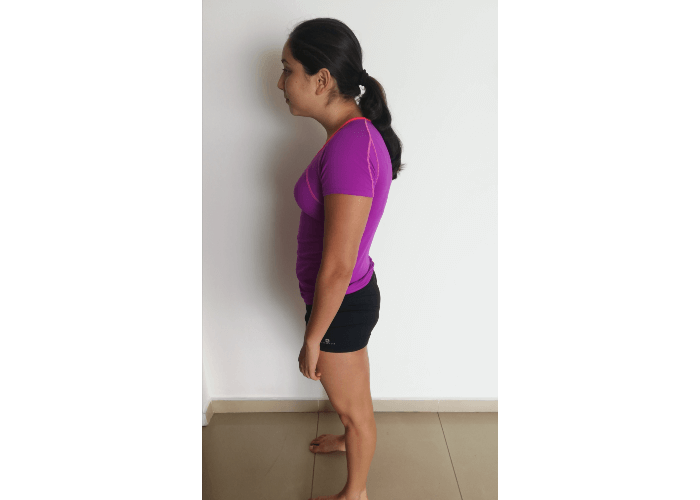
Photo Courtesy: Daniela Navarrete
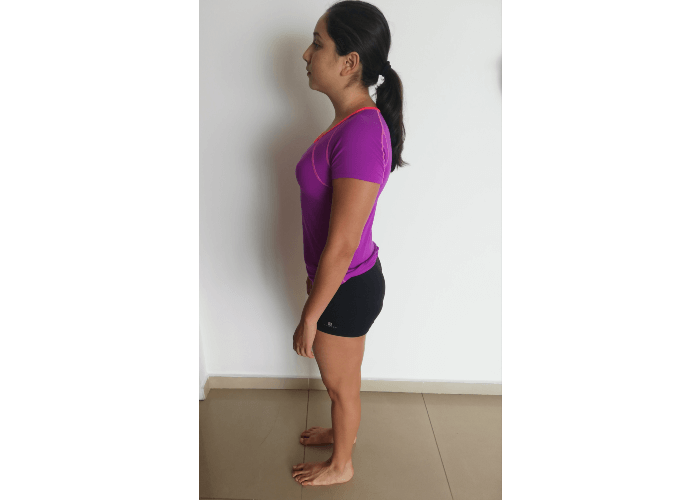
Photo Courtesy: Daniela Navarrete
A great singing position entails keeping the head parallel to the floor, neither too high nor too low, as well as relaxed shoulders positioned downward and backward. This can force swimmers to keep their shoulders back rather than slouching forward in the typical “swimmer’s posture.” If a swimmer has poor posture outside of the pool, it will probably translate to poor posture in the water. As a result, it will cause the primary muscles (diaphragm and intercoastals) to function improperly.
Additionally, the shoulder and back muscles are fundamental in maintaining a proper posture, which improve core stabilization in the water.
Conclusion
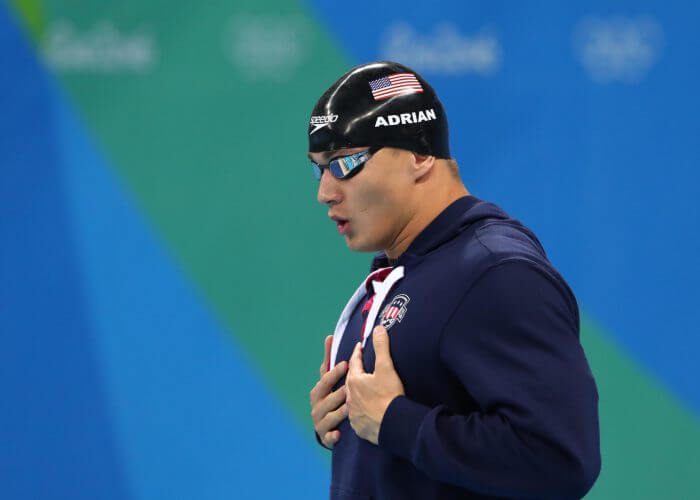
Photo Courtesy: Rob Schumacher-USA TODAY Sports
Although no rigorous scientific study has been conducted to definitively prove the link between singing exercises and improved breathing in the water, there is a strong implication that strengthening the diaphragm with singing exercises could benefit swimmers for more efficient breathing.
Swimming and running, swimming and lifting, swimming and yoga…Swimmers combine their training with these and other activities outside of the pool to increase strength, aerobic condition and flexibility. Swimming and singing may not have a lot in common, but what they do share are basic principles on breathing. Why not give singing lessons a try?
Share with us if you’ve had experienced any changes in your swimming while having vocal training!
-All research was conducted by the author and does not necessarily reflect the views of Swimming World Magazine nor its staff.




Thanks you Danielle for this excellent analogy to the singing /breathing voice. Paul Witkowski, Marketing/Communications Manager, National Association of Teachers of Singing (nats.org)